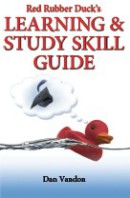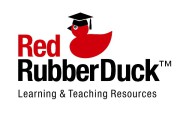
How the Red Rubber Duck Method Comes to Life in the Mentabacus Project
The Red Rubber Duck method is built on one core insight:
learning works better when you actively structure and visualize information. The Mentabacus project brings this philosophy to life through a tangible system that turns abstract knowledge into memorable mental models — step by step.
Mentabacus is a learning and memory tool based on a 4×4x4 visual grid, where each position represents a preset scenery. Into each box, learners place a meaningful object — called an Association Trigger Item — that kickstarts a story designed to help them remember complex material through spatial and narrative cues.
At its core, Mentabacus combines three key learning tools that mirror the Red Rubber Duck method:
- The Association Tool: Each ATI on a grid position anchors a vivid mental image that serves as the starting point of a mental movie. This forms the emotional and sensory hook — the entry point for recalling diagrams step-by-step. To use a metaphor from the Red Rubber Duck, Mentabacus helps to adopt an “information-hunter-gather” perspective.
- The Structure Tool: Mentabacus is based on the idea that before you can meaningfully recall information, you must first truly understand it. It focuses on a narrow but impactful part of the learning process: the recall of simplified diagrams that visually structure a domain of information. Learners use the Information Overview Card to reconstruct key ideas step by step, linking story elements to the evolving diagram with precision and clarity.
- The Big Picture Tool: Finally, the Mentabacus method focuses on cornerstone-like parts of a given domain of knowledge. But what are these? Using the Mentabacus, the learner must adopt a big picture view of the material — making it a crucial task to prioritize between different levels of importance and decide what truly deserves a place in memory.
Mentabacus doesn’t just store information — it forces you to reconstruct it. Like the Red Rubber Duck method, it turns passive review into active engagement. And in doing so, it helps learners think inside the box — and come out thinking more clearly.
Visit www.mentabacus.com



